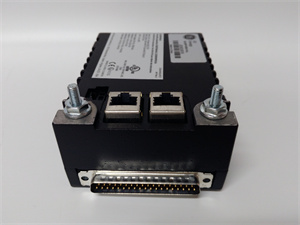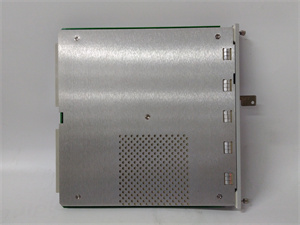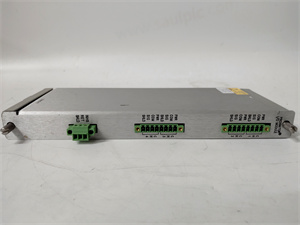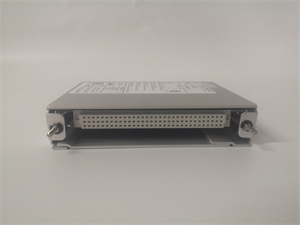Description
1. Product Description
The GE Fanuc IS220PVIBH1AL serves as a vital component in industrial automation systems, specializing in vibration analysis and machinery protection. It integrates seamlessly with GE’s Mark VIe control system, providing real-time insights into equipment performance. Key features include:
- Multi-Sensor Compatibility: Supports proximity probes, accelerometers, velocity sensors, and Keyphasor® inputs, enabling comprehensive vibration monitoring across rotating machinery.
- Local Processing: Built-in processor performs spectral analysis, envelope detection, and peak hold calculations, reducing the load on the main controller.
- Redundancy: Optional Triple Modular Redundancy (TMR) configuration ensures continuous operation in mission-critical applications.
- Wide Temperature Range: Operates reliably from -40°C to 70°C, making it suitable for outdoor and extreme industrial environments.
- Safety Certifications: Complies with CE and UL standards, ensuring compliance with global safety requirements.
The module’s RJ-45 Ethernet ports and DC-37 pin connector facilitate easy integration with existing SCADA systems and terminal boards, such as GE’s TVBA for turbine protection.
2. Product Parameters
| Parameter | Specification |
|---|---|
| Input Voltage | 24 V DC (±10%) |
| Current Consumption | 0.5 A |
| Sensor Channels | 13 analog inputs (proximity, velocity, accelerometer) |
| Signal Bandwidth | 1150 Hz |
| Communication Protocols | RS-485, Ethernet (Modbus TCP, DNP 3) |
| Operating Temperature | -40°C to 70°C |
| Dimensions | 130 mm x 90 mm x 35 mm |
| Weight | 0.3 kg |
| Certifications | CE, UL, IEC 61850 |
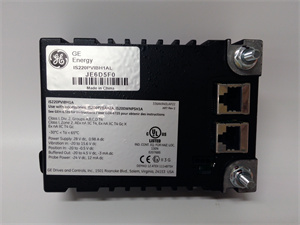
IS220PVIBH1AL
3. Advantages and Features
- High Reliability:
- TMR Redundancy: Ensures system continuity by automatically switching to backup modules in case of failure.
- Electromagnetic Interference (EMI) Protection: Shielded design minimizes noise interference in high-power environments.
- Advanced Diagnostics:
- Real-time vibration analysis identifies anomalies early, reducing unplanned downtime by up to 30% in power plant applications.
- Self-diagnostic capabilities detect sensor failures and communication errors.
- Flexibility:
- Configurable thresholds and alarm settings adapt to specific machinery requirements.
- Supports both simplex and TMR configurations for scalability.
- Energy Efficiency:
- Low power consumption (0.5 A) reduces operational costs.
4. Application Areas and Use Cases
The IS220PVIBH1AL is widely used in:
- Power Generation: Monitoring gas turbines, steam turbines, and generators to optimize performance and prevent catastrophic failures.
- Oil and Gas: Vibration analysis in compressors and pumps to ensure safe and efficient operations.
- Manufacturing: Predictive maintenance in rotating machinery, such as motors and conveyor systems.
Case Study: In a combined-cycle power plant, the IS220PVIBH1AL was deployed to monitor a gas turbine’s vibration levels. Its real-time data analysis detected a developing bearing fault, allowing maintenance teams to schedule repairs proactively. This intervention reduced downtime by 25% and saved over $500,000 in potential repair costs.
5. Competitive Comparison
Compared to similar vibration monitoring modules, the IS220PVIBH1AL stands out for its 13-channel capacity and TMR redundancy, which are rare in competing products. While some alternatives focus on basic vibration detection, the IS220PVIBH1AL offers advanced spectral analysis and integration with GE’s ecosystem, ensuring seamless compatibility with existing infrastructure. Its wide temperature range also outperforms many competitors designed for indoor use only.
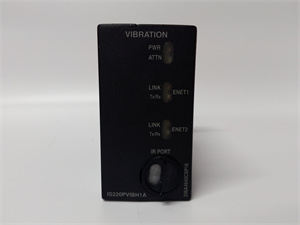
IS220PVIBH1AL
6. Selection Recommendations
When choosing the IS220PVIBH1AL, consider:
- Sensor Compatibility: Verify support for your specific sensor types (e.g., proximity probes, accelerometers).
- Redundancy Needs: Opt for TMR configuration for critical applications requiring high availability.
- Environmental Conditions: Ensure the module’s operating temperature range matches your installation environment.
- Integration Requirements: Check compatibility with your existing control system (e.g., GE Mark VIe, SCADA).
7. Notes
- Installation: Follow GE’s guidelines for proper grounding and cable routing to avoid EMI.
- Maintenance: Regularly update firmware to access the latest features and security patches.
- Safety: Disconnect power before servicing the module and use anti-static equipment to prevent damage.
- Calibration: Perform periodic sensor calibration to maintain measurement accuracy.

